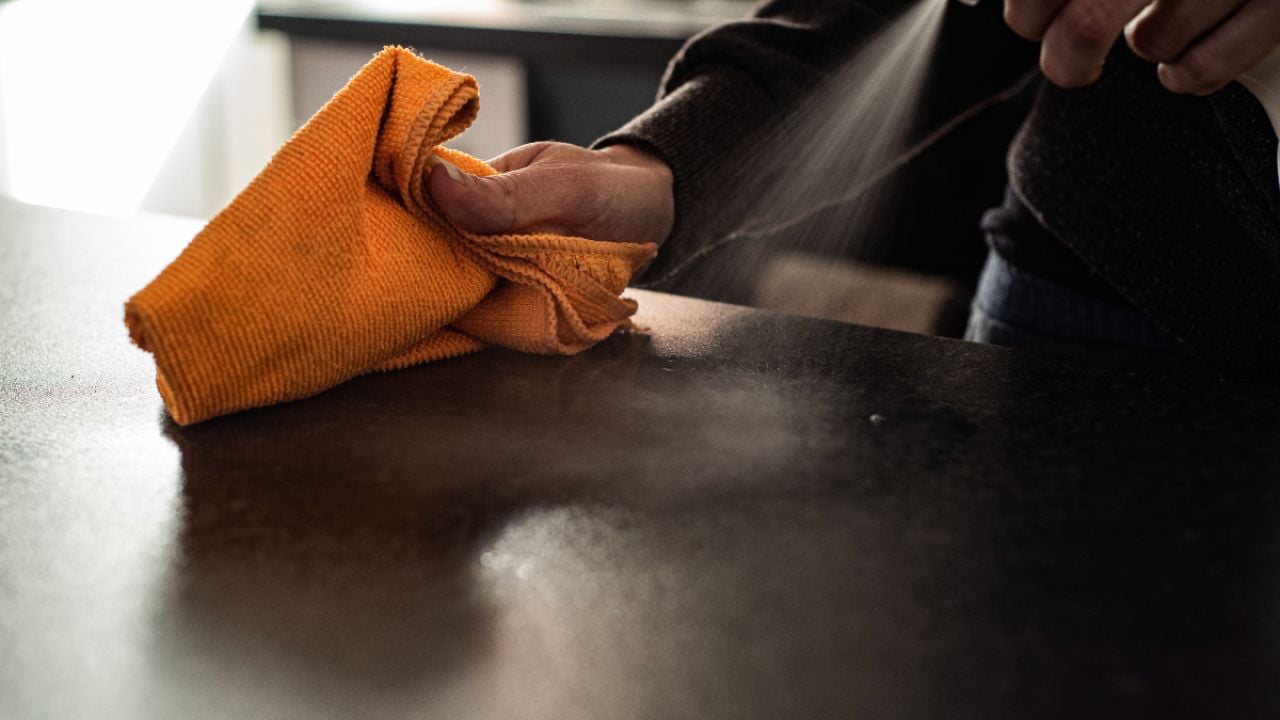
It’s spring, and many Americans are cleaning out their homes and throwing away what they no longer need. Let’s make sure this happens without using toxic chemicals.
EWG has rated over 2,500 cleaning products to make it easier for you to find healthier cleaners for spring cleaning.
Reading product labels can be confusing, and sometimes cleaning products don’t disclose all the chemicals in the ingredient lists. Consumers can search the Guide to Healthy Cleaning to learn how their products rate or to find top-rated “A” or “B” cleaners.
Products free from our chemicals of concern that meet our strictest standards for health and the environment earn the coveted EWG VERIFIED™ mark.
Children are more vulnerable to potentially toxic chemicals, so make sure to keep cleaning products safely away from toddlers and children. Dangerous ingredients, like ammonium hydroxide, are responsible for thousands of emergency room visits each year because children have ingested them. These chemicals might also cause burns when spilled.
Sodium hypochlorite is found in chlorine bleach and is linked to skin and respiratory harms. When improperly mixed with other ingredients or acids, exposure to it can be fatal.
Quaternary ammonium compounds, or quats, used in cleaning products have been linked to asthma and reproductive harm, including birth defects, in animals.
Another ingredient to watch for is the mystery ingredient “fragrance.” Mixtures of fragrance can be made up of any combination of chemicals on a list of thousands. Some, like phthalates, are linked to health hazards. Avoid air fresheners when you can.
Beware marketing claims on product labels. Just because “natural” is on the package, it doesn’t mean the formula is free from potentially harmful ingredients or safe to use. Naturally occurring substances that come from essential oils and are used in such products, such as linalool and eugenol, can sometimes trigger allergic reactions.
Companies sometimes claim a formula is “non-toxic,” “earth friendly” or “hypoallergenic.” But these terms have no official definition and are often used to greenwash a product.
Do-it-yourself products made from common kitchen ingredients, such as baking soda and vinegar, are excellent, inexpensive options. When combined, baking soda and water create a paste that will clean ovens and tackle toilet stains. If you plan to use a recipe, be sure you check which ingredients should not be mixed because they might cause harmful reactions, like chlorine bleach with ammonia cleaners, vinegar or other acidic substances.
You may prefer to use disinfectants that have been recommended by the Environmental Protection Agency and the Centers for Disease Control and Prevention to combat Covid-19. Make sure to cross-reference those products with EWG’s Guide to Healthy Cleaning to find disinfectants with fewer ingredients that may affect your health.
Our tip sheet provides an overview of safe practices for cleaning. You can also look for the EWG VERIFIED™ mark on cleaners that meet our strictest standards for health, as well as scan cleaning products on your smartphone or tablet using the Healthy Living app.
Some additional tips:
- Read labels carefully, including all directions and warnings, and use cleaners as directed.
- Wear gloves and other personal protective equipment.
- Open your windows to ventilate the area while cleaning.
- Never mix cleaning products and disinfectants together.
- If you use a spray disinfectant, make sure to spray the product into a cloth first to reduce accidental inhalation.
- Cleaning cloths and mops can remove dust and dirt without harmful chemicals.
- Clean visibly dirty or greasy areas with soap and water before applying disinfectant or sanitizer.
- Focus on cleaning surfaces you touch frequently, like doorknobs, handrails, faucets and light switches.



